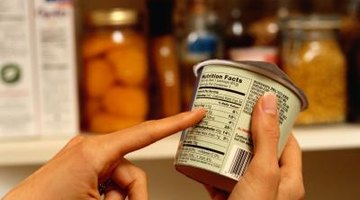Monosodium glutamate, commonly known as MSG, is a sodium salt derived from glutamic acid, one of the 22 amino acids. MSG was originally extracted from seaweed, and is now made by the fermentation of foods such as sugar beets, sugar cane, corn, potatoes and rice. Although MSG does not have a distinct flavour of it's own, it is used to enhance the flavour in prepared seasonings and processed foods. You can maintain an MSG-free diet by consuming fresh food in its simplest, most natural state, and by reading ingredient labels carefully.
Ingredient Label

According to the food industry definition, all MSG is "naturally occurring." "Natural" simply means that the ingredient started out in nature; it doesn't necessarily mean that the ingredient is safe or healthy. Avoid MSG by eating fresh food that does not include a list of ingredients to decipher through. if you do consume processed or convenience food, be sure to read the ingredient label carefully. An "All Natural," or "No Added MSG" label may imply that the product does not include MSG, but their are many hidden sources of MSG.
MSG Free Food List

An MSG-free diet will include food such as whole grains, rice, beans, lentils, nuts, fresh herbs and spices, raw fruit and vegetables, and unprocessed or minimally processed dairy and meat. MSG is sometimes sprayed directly on fruits, nuts, seeds, grains, and vegetables as they grow, so be sure to rinse your fresh food before you consume them.
MSG Synonyms

Eating fresh food is ideal, but to ensure that a processed food is MSG-free, familiarise yourself with the many synonyms of MSG. The U.S. Federal Drug Administration (FDA) regulations require the words "monosodium glutamate" to be present on the ingredient list if MSG has been added to the food. However, the amino acid glutamate is added to foods in many different forms such as hydrolyzed vegetable protein, yeast extract and gelatin. When selecting a processed food to eat, a good guideline to follow is to only consume the food if you can define the ingredient for yourself.
- Eating fresh food is ideal, but to ensure that a processed food is MSG-free, familiarise yourself with the many synonyms of MSG.
MSG Adverse Reactions
The Food and Drug Administration (FDA) has placed MSG in the same category as salt and pepper, and classifies it as generally safe for its intended use. However, the use of MSG remains controversial because many consumers have adverse reactions to MSG such as chest pain, nausea and palpitations. If you are experiencing an adverse reaction to MSG while maintaining an MSG-free diet, then you may want to consider other sources of MSG such as personal care products that are absorbed through the skin, dietary supplements and pharmaceuticals.
